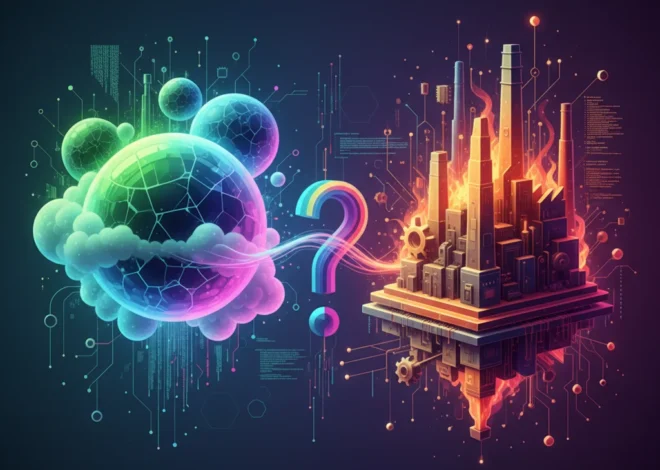
The AI Tsunami: How a Memory Chip Revolution is Fueling Japan’s Startup Renaissance
The Silent Engine Roaring Behind the AI Boom
We’ve all been captivated by the seemingly magical abilities of generative AI. From drafting emails to creating stunning art, tools like ChatGPT and Midjourney have reshaped our digital landscape. But behind the curtain of this incredible software revolution, a lesser-known but equally dramatic transformation is happening in the world of hardware. The insatiable hunger of artificial intelligence for data and processing power is causing a seismic shift in a market that, until recently, was considered a predictable, cyclical commodity game: the memory chip industry.
This isn’t just a story about silicon. It’s a story about how a single technological breakthrough in hardware can ripple across the globe, shaking up corporate giants and, unexpectedly, breathing new life into a nation’s dormant tech scene. The same force that’s crowning new kings in the semiconductor world is also fueling a vibrant startup renaissance in Japan, a country many had written off in the global tech race. Let’s dive into the two interconnected trends that are defining the next chapter of innovation: the AI-driven memory market upheaval and the exciting rise of Japan’s new tech guard.
The Memory Bottleneck: Why Your Laptop’s RAM Isn’t Enough for AI
To understand the current disruption, we first need to grasp a fundamental challenge in machine learning. Large Language Models (LLMs) are, at their core, gigantic matrices of numbers (parameters) that need to be accessed and processed at lightning speed. Your standard computer memory (DRAM) is like a long, single-lane country road. It’s fine for everyday tasks, but when you try to move the massive amount of data an AI model needs, you get a traffic jam of epic proportions. This “memory wall” has been a major bottleneck holding back AI’s potential.
Enter High-Bandwidth Memory (HBM). Think of HBM not as a single road, but as a 12-lane superhighway stacked vertically. It involves layering memory chips on top of each other and connecting them with thousands of tiny data pathways. This allows for an incredible volume of data to be transferred directly to the processor, like Nvidia’s powerful GPUs, which are the workhorses of the AI world. This architecture is a game-changer for training and running complex AI models, drastically reducing latency and boosting performance.
The Great Memory Market Shake-Up
For years, the memory market was dominated by a few key players, with Samsung often leading the pack. But the sudden, explosive demand for HBM caught many by surprise. One company, South Korea’s SK Hynix, had made a strategic, long-term bet on HBM, perfecting its manufacturing process and building a strong relationship with Nvidia. This foresight paid off spectacularly. As the AI boom ignited, SK Hynix found itself in the enviable position of being the leading supplier of the most critical component for AI hardware. In fact, their HBM business is reported to have grown “more than fivefold” in 2023 alone, a staggering figure that highlights the scale of this shift.
This new reality has turned the traditional memory market on its head. Below is a simplified look at how the demands of AI have changed the game for memory chips.
| Feature | Traditional DRAM (for PCs/Servers) | High-Bandwidth Memory (HBM for AI) |
|---|---|---|
| Primary Goal | Cost-efficiency and capacity | Maximum data transfer speed (bandwidth) |
| Architecture | Flat, two-dimensional layout | Vertically stacked 3D chip layers |
| Data Pathways | Narrow (e.g., 64-bit interface) | Ultra-wide (e.g., 1024-bit interface) |
| Key Beneficiary | Commodity manufacturers | Specialized innovators like SK Hynix |
| Market Driver | PC and smartphone sales cycles | Cloud and AI infrastructure investment |
The rise of HBM shows that in the era of AI, hardware is no longer just a commodity. It’s a critical enabler of innovation, where deep engineering and strategic bets can create new market leaders overnight.
Japan’s Phoenix Moment: A Startup Ecosystem Reborn
While silicon giants battle for supremacy, this hardware revolution is creating fertile ground for a new generation of software and SaaS pioneers. And nowhere is this more surprising and exciting than in Japan. After the tech boom of the 1980s, Japan’s technology sector entered a period of relative stagnation, often overshadowed by Silicon Valley and China’s rapidly growing ecosystems. But the global shift towards AI, combined with a cultural change, is sparking a remarkable comeback.
A new wave of entrepreneurs, many with experience at global tech giants, are choosing Tokyo over California to build the next big thing. They are leveraging Japan’s deep engineering talent pool, a supportive government, and a renewed sense of technological ambition. Let’s look at a few of the startups leading the charge.
Sakana AI: Fishing for Intelligence in a New Way
Perhaps the most talked-about new player is Sakana AI. Founded by David Ha and Llion Jones, two renowned former researchers from Google, the company is a testament to Japan’s newfound appeal. Jones is notably one of the authors of the seminal “Attention Is All You Need” paper, which introduced the Transformer architecture that underpins virtually all modern LLMs (source). Instead of building ever-larger monolithic models, Sakana AI is exploring “evolutionary” methods, where smaller, specialized AI models are combined and evolved like species in nature to solve complex problems. This innovative approach to machine learning helped them raise $30 million in seed funding from top-tier VCs, a clear signal of global confidence in Tokyo’s potential as an AI hub.
From Automation to Autonomy: ABEJA and TIER IV
Beyond the headline-grabbing generative AI space, Japanese startups are also making deep inroads into enterprise and industrial applications.
- ABEJA: One of the more mature companies in this new wave, ABEJA provides a platform for enterprises to implement AI, focusing on retail and manufacturing. Their “ABEJA Platform” offers a suite of tools for the entire programming and deployment lifecycle of an AI model, enabling businesses to leverage automation and data-driven insights.
- TIER IV: This startup is tackling one of the most complex challenges in AI: autonomous driving. They are the creators of Autoware, the world’s first open-source software for self-driving vehicles. By building a community and an ecosystem around their software, TIER IV is taking a collaborative approach to a field that requires immense investment in R&D and, crucially, cybersecurity.
These companies represent a broader trend. They are not just building apps; they are creating foundational platforms and tackling hard-tech problems, signaling a new depth and maturity in Japan’s startup ecosystem.
What This Means for the Future of Tech
The dual stories of the HBM revolution and Japan’s startup revival are more than just interesting market trends. They offer crucial insights for anyone involved in technology, from developers to entrepreneurs.
- The Full Stack is Back: The AI era rewards those who understand the interplay between hardware and software. Innovations at the silicon level create new possibilities for algorithms and applications. For developers, this means that optimizing code for specific hardware architectures is becoming a vital skill.
- Innovation is Global: Silicon Valley is no longer the only game in town. The rise of hubs like Tokyo, powered by global talent and local expertise, shows that groundbreaking companies can emerge from anywhere. For entrepreneurs, this opens up a wider map of opportunities for fundraising, talent acquisition, and market entry.
- Niche is the New Big: While building foundational models requires immense capital, the success of companies like Sakana AI and TIER IV shows there is huge potential in finding novel approaches (evolutionary AI) or focusing on specific, complex industries (autonomous driving). The AI revolution is not a single race; it’s a vast landscape of different problems waiting to be solved.
Europe's Tech Paradox: Why a Continent of Innovators Can't Build Giants
A New Dawn for a Tech Titan?
The convergence of a hardware paradigm shift and a cultural embrace of entrepreneurship has placed Japan at a fascinating crossroads. The demand for specialized hardware like HBM, driven by the boundless ambition of AI software, has reset the board for global tech leadership. At the same time, a new generation of Japanese founders, armed with world-class ideas and global ambition, is proving that the nation’s capacity for deep-tech innovation is very much alive.
Whether this is a fleeting moment or the beginning of a sustained technological renaissance remains to be seen. But one thing is clear: the silent roar of the servers powering our AI future is being amplified by new voices and new ideas from Tokyo, and the world of tech is all the more exciting for it.


